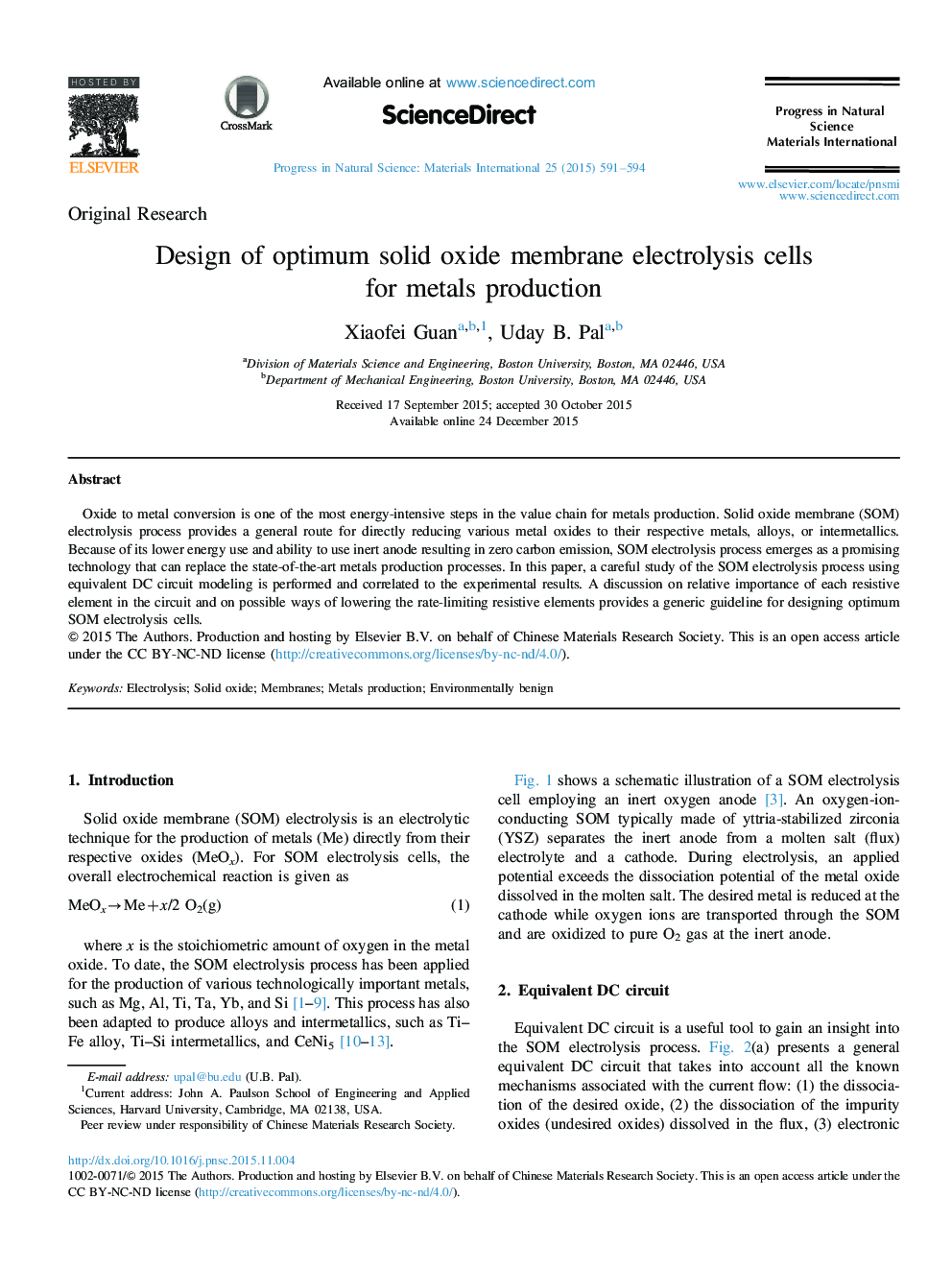| Article ID | Journal | Published Year | Pages | File Type |
|---|---|---|---|---|
| 1548257 | Progress in Natural Science: Materials International | 2015 | 4 Pages |
Oxide to metal conversion is one of the most energy-intensive steps in the value chain for metals production. Solid oxide membrane (SOM) electrolysis process provides a general route for directly reducing various metal oxides to their respective metals, alloys, or intermetallics. Because of its lower energy use and ability to use inert anode resulting in zero carbon emission, SOM electrolysis process emerges as a promising technology that can replace the state-of-the-art metals production processes. In this paper, a careful study of the SOM electrolysis process using equivalent DC circuit modeling is performed and correlated to the experimental results. A discussion on relative importance of each resistive element in the circuit and on possible ways of lowering the rate-limiting resistive elements provides a generic guideline for designing optimum SOM electrolysis cells.
